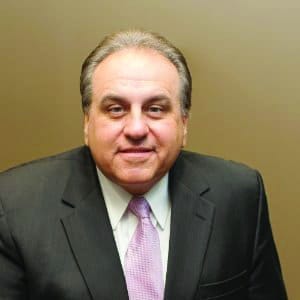What do remote microphones, alerting devices, and loop systems have in common? The answer is that patients are usually told about these exceptionally useful hearing care products after they’ve already committed to purchasing a hearing aid. Often the result is that patients are much less likely to buy these important assistive devices.

For Marshall Chasin, AuD, owner of Toronto-based Musicians’ Clinics of Canada (and many other audiologists), that’s a pity. “I have a very positive opinion of assistive hearing devices,” Chasin says. “You start with modern hearing aids, and the one thing that can improve usability, music appreciation, and speech clarity—it’s assistive listening devices. They bring sound from a distance to right in front of the individual.”
When is the right time to mention these products? Chasin confirms that it’s a difficult question for many hearing care professionals (HCPs) in the United States, primarily because of an “unsubstantiated fear among my fellow hearing healthcare professionals that clients will go with one versus another, and not both.”
In an ideal situation where money is not an issue, Chasin believes it does not matter whether HCPs present hearing aids, remote microphones, or other assistive listening devices at the same time or sequentially. However, he concedes, “Most times, it’s best to mention assistive devices initially, but not really concentrate on them until a follow-up appointment.”
In this scenario, patients would have the hearing aid, “and maybe at their one-month, 3-month, or 6-month checkup, you start talking about these assistive listening devices—perhaps even demonstrate them…There are many things to do after they buy the hearing aid.”
Along with a hearing aid fitting, many hearing aid manufacturers offer a series of accessories. These assistive listening devices usually work with, and alongside, the hearing aid. “All of these devices have one great benefit in that they improve the signal-to-noise ratio,” Chasin adds. “It doesn’t necessarily enhance the signal—whether that’s speech or music—but they do decrease the level of extraneous noises.”

According to Thomas Tedeschi, AuD, chief of audiology Amplifon America, Minneapolis, the best time to mention ancillary options is during a discussion of amplification needs. “First you discuss the needs for amplification and the type of amplification you would recommend,” he says. “At that time, incorporate different types of assistive devices. Show how the hearing device will couple to a TV, or phone, or different things. It should be done at the time you are discussing the benefits of amplification and what amplification can do for patients.”
In fact, a recent Hearing Review article points out how Washington University researcher-clinician Michael Valente, PhD, would demonstrate the utility of remote mics by walking 50-70 feet away from the patient (eg, down a hallway with his back turned), usually while talking about his beloved St. Louis Cardinals. Because the patient hears every word and the demonstration of the technology takes less than 3-5 minutes, most purchase the remote mic to use with their hearing aids.
Tedeschi echoes the contention that remote microphones, alerting devices, and loop systems can be highly effective within the hearing continuum. They key is to keep in mind what is best for patients.
“Our goal as hearing healthcare professionals is to make communication as easy as possible and hearing as natural as possible,” he says. “That not only includes the hearing aid device itself, but any kind of assistive device that’s going to make communication easier. If we exclude those devices, we’re not looking at the whole patient. As hearing aids are becoming more sophisticated, a great number of these assistive devices are being incorporated into some of the smart hearing aids we have today that are utilizing different amplification strategies.”
Some HCPs are reluctant or hesitant to offer assistive devices in addition to what can be an expensive hearing aid purchase. However, the full range of aural rehabilitative options should be presented—as should options for payment for any or all of the devices.
“Audiology is not just managing the sale of hearing aids,” adds Dan Quall, MS, a longtime expert in practice management and former owner of a multi-office practice in the Pacific Northwest. “Audiologists and hearing aid specialists are managing hearing loss long term. It’s a chronic health issue. By giving patients choices via payment plans or programs, subscription models, or programs that match discount players—HCPs can go out and compete at a pretty strong level.”
For more information about hearing aid financing, visit: https://www.ally.com/consumer-financing/healthcare/





